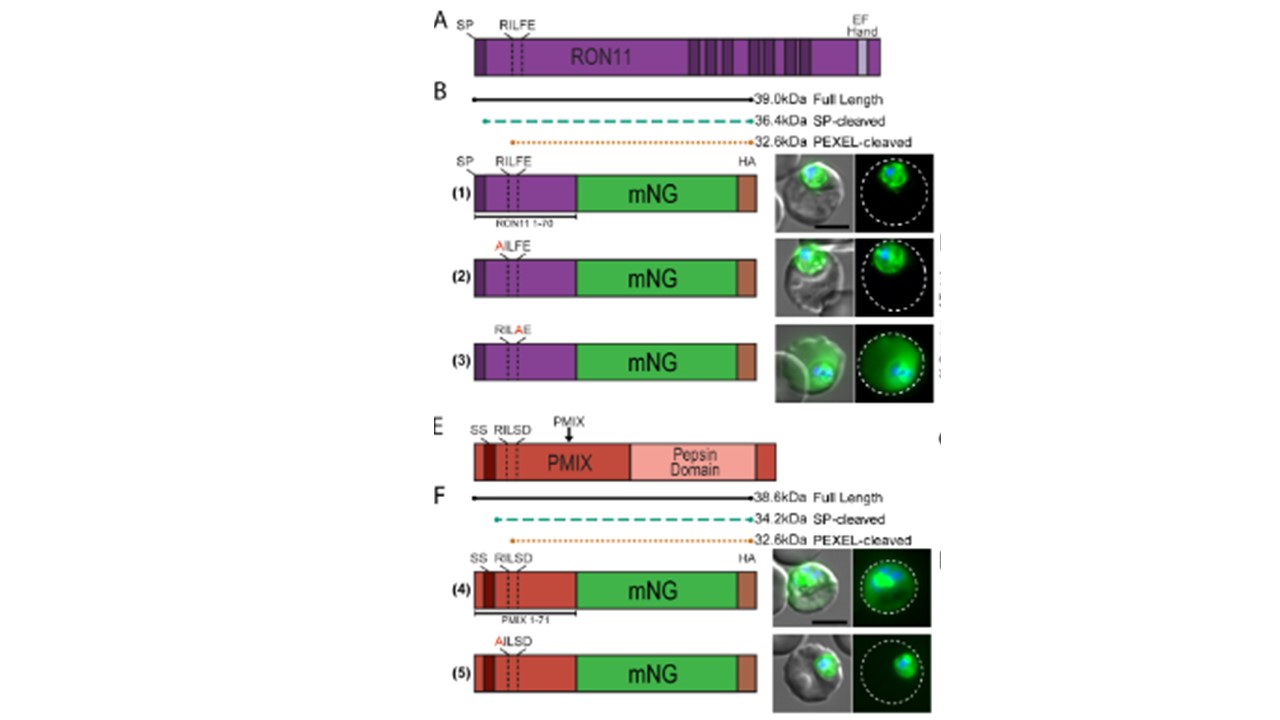PEXEL motifs are present and cleaved in the N termini of the rhoptry proteins RON11 and PMIX. (A) Schematic of full-length RON11. Dark bars represent either the signal peptide or transmembrane domains. (B) Schematic of the reporter construct containing residues 1–70 of RON11 with either the WT PEXEL motif (1), an R51A (2), or F54A (3) PEXEL mutation, followed by representative live microscopy of parasites expressing the reporter. (E) Schematic of full-length PMIX. Dark red bar represents the recessed signal sequence. (F) Schematic of the reporter construct containing residues 1–71 of PMIX with either the WT PEXEL motif (4) or an R46A mutation (5) followed by representative live microscopy of parasites expressing the reporter. (G) Western blot of PMIX reporter constructs. Arrows indicate bands corresponding to the expected molecular weights shown in the schematic in panel F for the full-length, signal peptidase-cleaved or PEXEL-cleaved versions of the reporters. (H) Quantification of reporter localization as exported into the RBC or strictly within the PV/parasite. Data are presented as means ± standard deviation from two biological replicates [(4) n = 99 iRBCs and (5) n = 92 iRBCs]. All scale bars: 5 µm. Microscopy images show mNG (green) and Hoechst 33342 (blue) fluorescence on the right and merge with DIC on the left. Dashed lines indicate the RBC boundary traced from DIC. Fierro MA, Muheljic A, Sha J, Wohlschlegel J, Beck JR. PEXEL is a proteolytic maturation site for both exported and non-exported Plasmodium proteins. mSphere. 2024 9(2):e0039323. PMID: 38334391;
Other associated proteins
| PFID | Formal Annotation |
|---|---|
| PF3D7_1430200 | plasmepsin IX |
